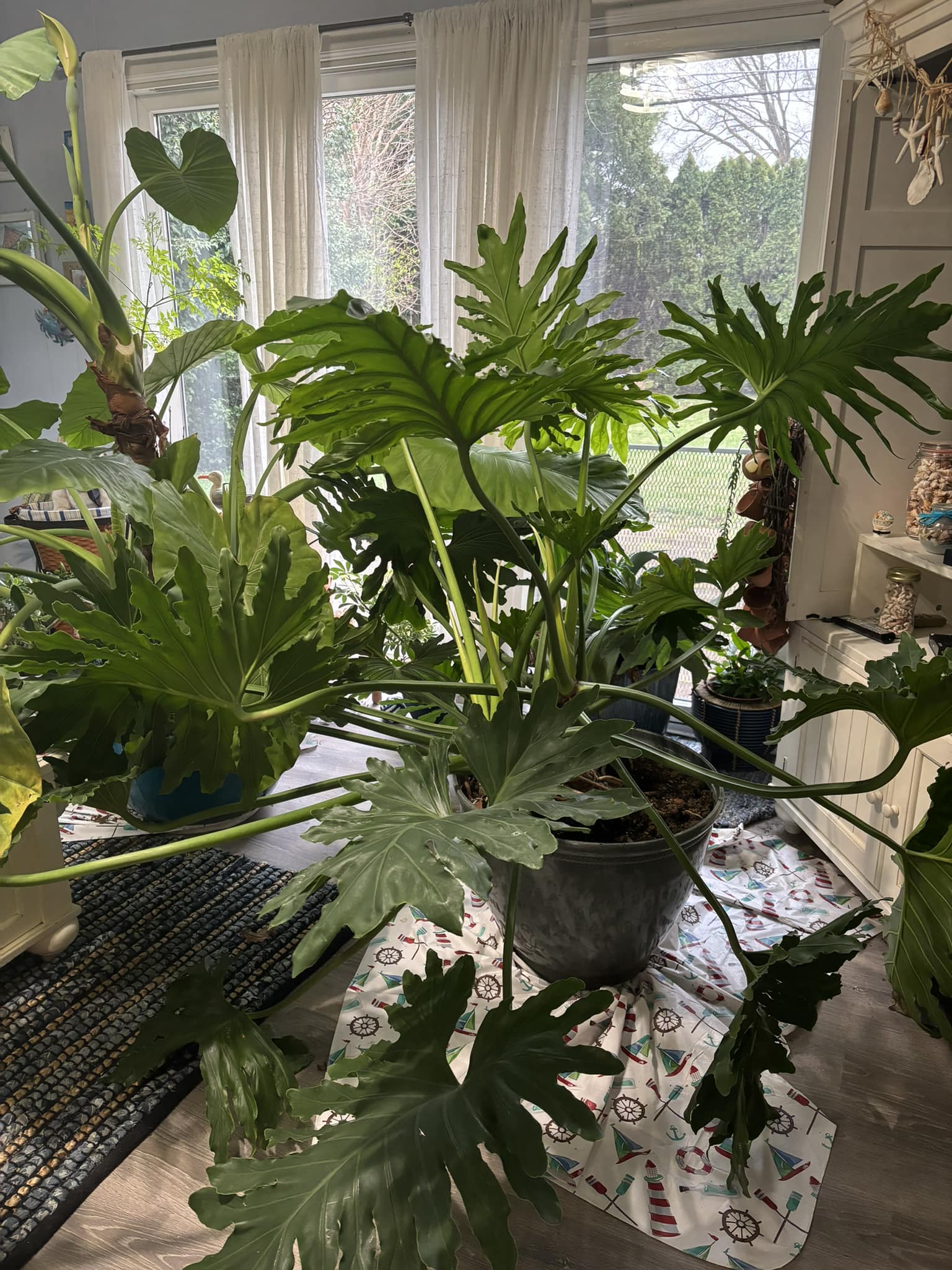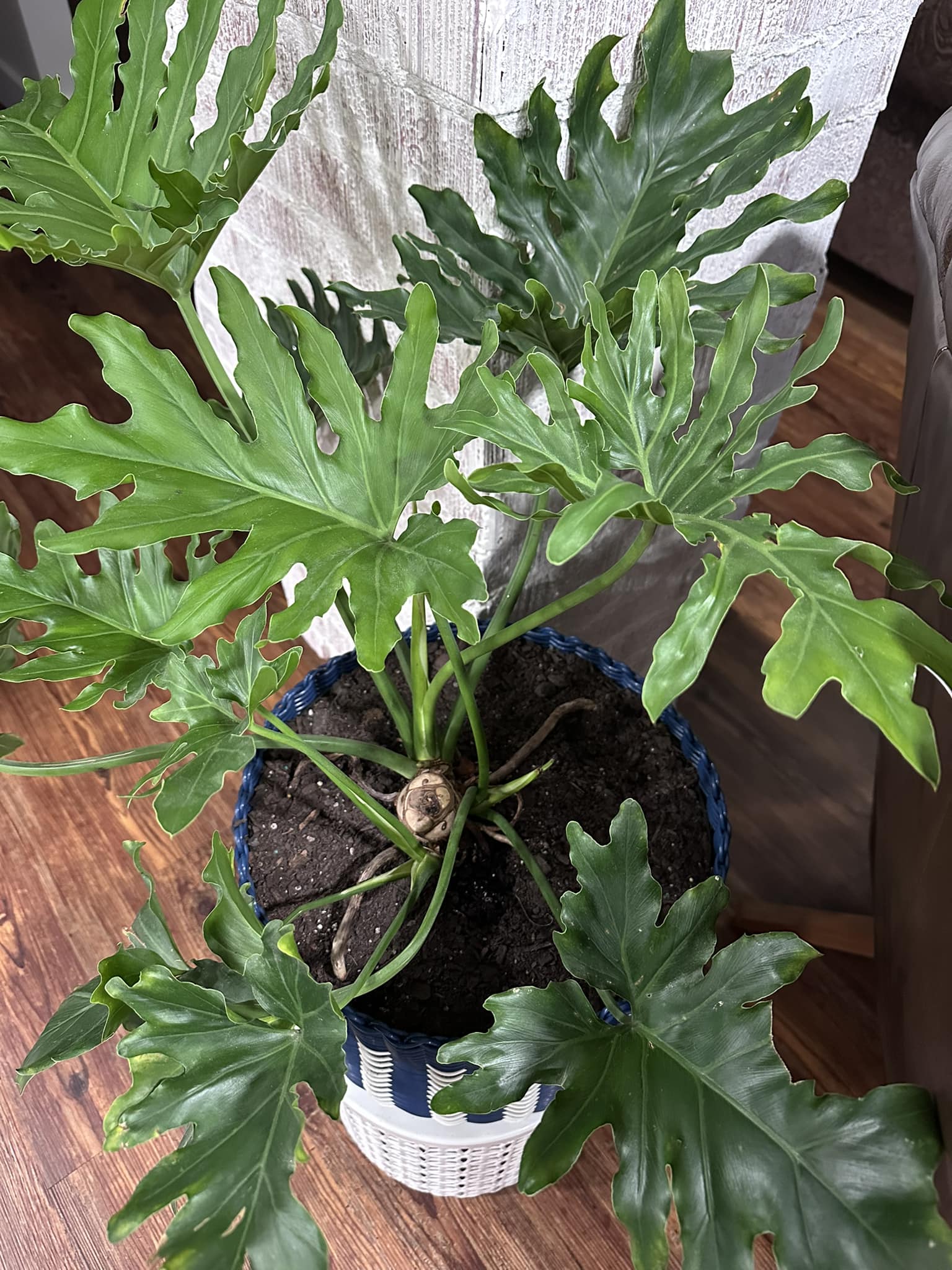
The Split Leaf Philodendron, also known as Monstera deliciosa, is a stunning tropical plant famous for its large, glossy, deeply lobed leaves. This plant brings a lush, jungle-like feel to any indoor or outdoor space, making it a favorite among plant enthusiasts.
However, ensuring that it thrives requires more than just occasional watering. Understanding its natural habitat and mimicking those conditions will allow your plant to grow vibrantly and produce those characteristic split leaves. In this guide, we’ll go in-depth on everything from light and watering needs to soil composition and propagation, equipping you with the knowledge of an experienced gardener.
I’ve provided detailed information in the article below to help with your concerns, However, if you still have questions or need more help, feel free to share photos of your plants or describe your issue on our Facebook Group. Just join the group and leave a comment on the most recent post — either I or someone from the community will respond as soon as possible. We also share helpful and unique plant care tips daily, so consider joining the group to stay updated!
Understanding the Split Leaf Philodendron

Is a Split Leaf Philodendron the Same as a Monstera?
One of the most common misconceptions is that the Split Leaf Philodendron and Monstera deliciosa are different plants. While the terms are often used interchangeably, they refer to the same species. However, some other philodendrons, like Philodendron bipinnatifidum, have similar-looking leaves but belong to a different species altogether. It is important to distinguish between these plants because they have slightly different care requirements.
Why Does the Split Leaf Philodendron Have Unique Leaves?
The iconic split leaves develop as the plant matures, helping it adapt to its natural rainforest environment. These holes and slits, called fenestrations, allow light to filter through the canopy and reach the lower parts of the plant. This adaptation also helps reduce resistance to strong winds in the wild, making the plant more resilient. Ensuring that your Monstera receives the right conditions will encourage these beautiful splits to develop sooner.
How to Care for a Split Leaf Philodendron
1. Light Requirements
- Does it need direct sunlight? No, the Split Leaf Philodendron thrives in bright, indirect light. In its native tropical environment, it grows under the cover of taller trees, receiving dappled sunlight rather than harsh, direct rays.
- Too much direct sunlight can scorch its leaves, leaving unsightly brown spots.
- On the other hand, too little light can cause slow growth and leggy stems, making the plant look weak and stretched out as it tries to reach for more light.
- Best placement: A spot near an east- or west-facing window where it gets plenty of natural light but is shielded from the intense midday sun.
- If growing indoors and your home lacks natural light, consider using a grow light to supplement its needs, especially during the winter months.
2. Watering Needs
- How often should you water it? The key to watering a Split Leaf Philodendron is consistency without overdoing it.
- Water your plant when the top 2-3 inches of soil feel dry to the touch. This prevents root rot, a common issue with overwatering.
- Signs of overwatering: Yellowing leaves, mushy stems, and a foul smell coming from the soil. If this happens, reduce watering and check the roots for rot.
- Signs of underwatering: Crispy brown edges on leaves, wilting, and slow growth. Increase watering frequency if you notice these signs.
- Always use room-temperature water, as cold water can shock the plant’s roots.
- Best practice: Water thoroughly until it drains from the bottom of the pot, ensuring that the roots receive adequate moisture while preventing waterlogging.
3. Humidity and Temperature
- The Split Leaf Philodendron is native to humid, tropical climates, so maintaining high humidity is essential for healthy growth.
- Aim for a humidity level of 60% or higher, especially if you live in a dry climate or use indoor heating that reduces moisture in the air.
- Ways to increase humidity:
- Use a humidifier to maintain consistent moisture levels.
- Mist the leaves occasionally, but avoid overdoing it as excessive moisture can encourage fungal diseases.
- Place the pot on a pebble tray filled with water, ensuring the bottom of the pot doesn’t sit directly in the water.
- Temperature: Keep your plant in an environment between 65-85°F (18-29°C).
- Avoid exposing it to cold drafts from air conditioners, open windows in winter, or sudden temperature fluctuations, which can stress the plant.
4. Soil and Potting Mix
- A well-draining, nutrient-rich soil mix is crucial to prevent root rot and ensure proper aeration.
- Best soil mix:
- Peat moss (retains moisture without waterlogging)
- Perlite (improves drainage)
- Orchid bark (adds structure and mimics the plant’s natural growing environment)
- Avoid using dense, compacted soil as it can suffocate the roots and hold too much moisture.
- Repotting: Every 2-3 years or when roots start growing out of the drainage holes. Repotting refreshes the soil and provides more space for growth.
5. Fertilizing Schedule
- Feed your plant with a balanced liquid fertilizer (such as a 20-20-20 formula) every 4-6 weeks during the growing season (spring and summer).
- Reduce feeding in fall and winter when the plant’s growth naturally slows down.
- Signs of over-fertilization: Brown leaf tips, salt buildup on the soil, and weak, leggy growth. If this happens, flush the soil with water to remove excess nutrients.
6. Pruning and Maintenance
- Pruning helps control growth, remove dead or damaged leaves, and encourage bushier development.
- Best practice: Use sterile pruning shears and cut just above a node to promote new growth.
- Wipe the leaves regularly with a damp cloth to remove dust, which can block sunlight absorption and reduce photosynthesis efficiency.
7. Propagation: Growing New Plants
- Propagation is an easy and rewarding way to create new plants.
- Follow these steps:
- Take a cutting with at least one node and one aerial root.
- Place the cutting in water or moist soil.
- Keep it in a warm, bright spot but avoid direct sunlight.
- Roots should develop within 2-4 weeks. Once well-established, transplant into a pot with well-draining soil.
8. Common Problems and Solutions
Yellowing Leaves
- Cause: Overwatering, poor drainage, or nutrient deficiencies.
- Solution: Check soil moisture, improve drainage, and adjust fertilization.
Brown Leaf Edges
- Cause: Low humidity, underwatering, or too much direct sunlight.
- Solution: Increase humidity, maintain consistent watering, and reposition the plant if necessary.
Leggy Growth
- Cause: Insufficient light.
- Solution: Move the plant to a brighter location or use a grow light.
